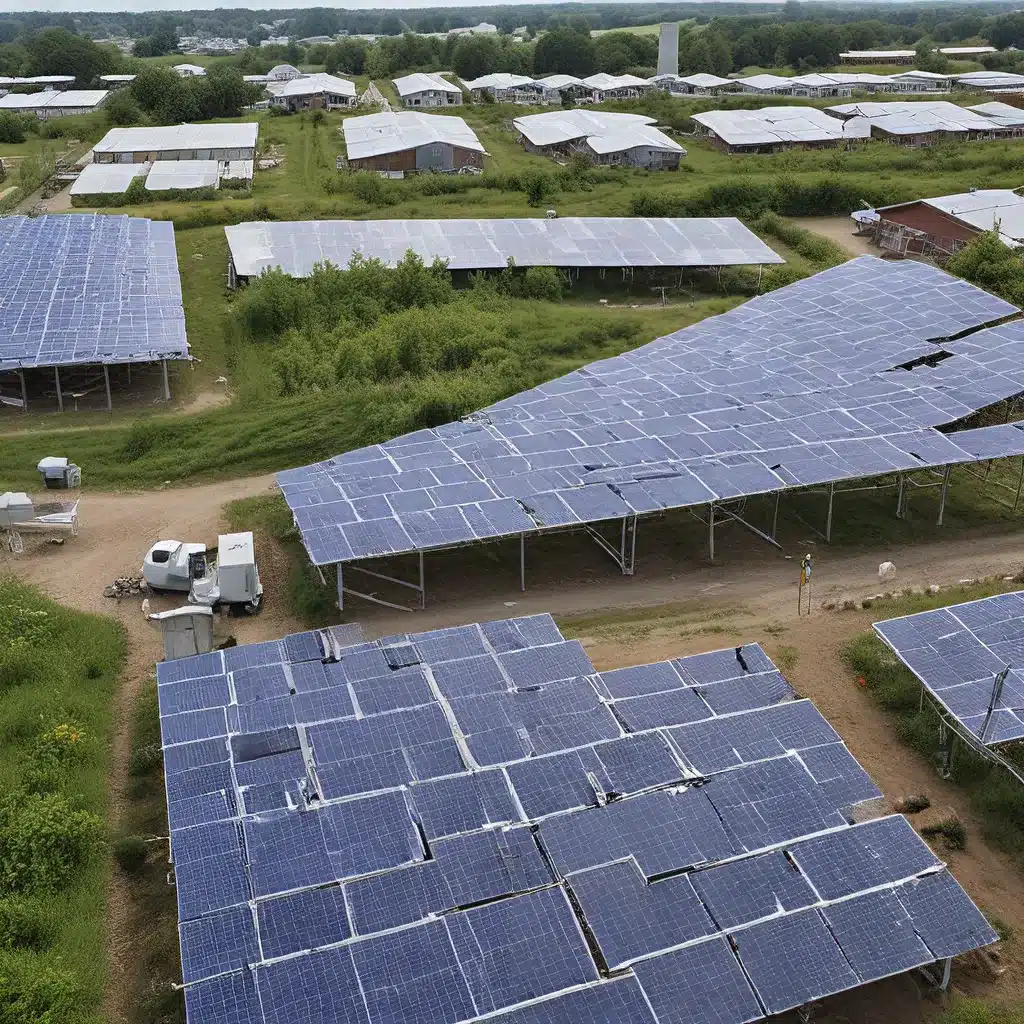
As I delve into the world of renewable energy solutions, I can’t help but be struck by the powerful connection between community engagement and the social impact of these projects. It’s a fascinating intersection that goes beyond just the technical aspects of energy generation – it’s about fostering a culture of sustainability that truly takes root within the local communities.
Let me share a personal anecdote that sparked my interest in this topic. I was chatting with a friend who lives in a small town that recently welcomed a new wind energy project. Initially, there was some skepticism and even resistance from the locals. “Change is always hard,” my friend admitted. But over time, something remarkable happened.
The wind turbines didn’t just start generating clean, renewable power – they also ignited a sense of community pride. People began to see their town as a leader in the fight against climate change. Local businesses embraced the new influx of jobs and economic opportunities. Schools incorporated renewable energy education into their curriculums. It was as if the very fabric of the community had been transformed.
Unlocking the Social Benefits of Renewable Energy
This experience got me thinking about the broader implications of community engagement in renewable energy projects. Sure, the environmental benefits are well-documented – reduced greenhouse gas emissions, decreased reliance on finite fossil fuels, and a cleaner, more sustainable future. But the social impacts can be just as profound, if not more so.
Recent studies have shown that when local communities are actively involved in the planning, implementation, and ongoing management of renewable energy projects, the results can be truly remarkable. A LinkedIn article I came across highlighted how wind energy projects in Latin America have witnessed “profound changes in the communities hosting these projects.” From job creation and infrastructure development to addressing potential conflicts and fostering a sense of shared purpose, the social benefits are undeniable.
But it’s not just about the immediate impacts. As an Illuminem Voices article pointed out, the cultural and community-building aspects of renewable energy projects can have long-lasting effects. Just as coal mining created a unique culture and identity in some regions, the transition to clean energy has the potential to cultivate a new era of sustainability-driven community pride.
Strategies for Effective Community Engagement
So, how can renewable energy companies and local governments work together to harness the power of community engagement? Here are a few strategies that have proven effective:
-
Inclusive Planning: Involve community members in the early stages of project development. Gather their input, address their concerns, and incorporate their ideas into the project design. This helps build a sense of ownership and investment.
-
Transparent Communication: Maintain open and transparent communication throughout the project lifecycle. Provide regular updates, address questions and concerns, and foster an ongoing dialogue with the community.
-
Job Creation and Training: Prioritize local hiring and provide training opportunities to help community members develop the skills needed for renewable energy jobs. This not only boosts the local economy but also fosters a sense of pride and empowerment.
-
Infrastructure Development: Invest in infrastructure improvements that benefit the broader community, such as upgrading roads, enhancing electricity grids, or building community centers. This helps bridge the gap between the project and the community’s everyday needs.
-
Educational Initiatives: Partner with local schools and community organizations to educate the public about renewable energy, its environmental benefits, and the role the community plays in this transition. This helps build a culture of sustainability and awareness.
-
Collaborative Problem-Solving: Establish ongoing channels of communication to address any concerns or conflicts that may arise. Encourage open dialogue and collaborative problem-solving to find mutually beneficial solutions.
Renewable Energy and the Future of Community Pride
As I reflect on the powerful intersection of renewable energy and community pride, I can’t help but feel optimistic about the future. The transition to clean energy is not just about technical solutions – it’s about empowering local communities, fostering a sense of shared purpose, and cultivating a culture of sustainability that can have a lasting impact.
Firewinder is a company that’s at the forefront of this movement, offering innovative renewable energy solutions that prioritize community engagement and social impact. Their approach recognizes that sustainable energy is not just about the environment – it’s about building stronger, more resilient communities that can thrive in the face of climate change.
Of course, the path ahead is not without its challenges. There will be ongoing debates and uncertainties as we navigate this transition. Some experts believe that the cultural and community-building aspects of renewable energy projects are still largely unexplored, and there is a need for further research and analysis to fully understand the long-term implications.
But one thing is clear: the power of community engagement in renewable energy projects is undeniable. By fostering a culture of sustainability and empowering local communities, we can unlock the full potential of clean energy to transform not just our environment, but the very fabric of our society. It’s an exciting and inspiring journey, and I’m thrilled to be a part of it.

